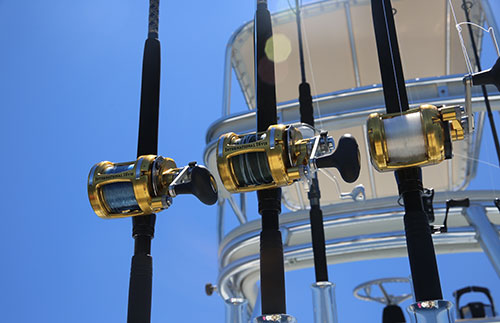Tactics For Awesome Surf Fishing
Surf fishing is a great way to start your saltwater fishing journey. It’s relatively inexpensive and not as complicated as other saltwater fishing options. When many anglers start with surf fishing and then move on to areas like light tackle and offshore fishing, many also stay with surf fishing their entire fishing life. Here a number of surf fishing tactics that help you become a skilled surf fishing angler.
Ask a Pro To Give You A Show
 Take a walk on the beach. Quicker than you think, you’ll come upon a guy or girl surf fishing. It’s easy to determine the real surf fisherman from those that have little experience. The beach cart with big tires, multiple surf rods and a focus on his or her most recent cast can tell the story. Slowly ease up to them, but keep a safe distance. Oftentimes they will start the conversation first, then you’re in the door. Many surf fishermen love to help others. When that happens listen carefully and ask questions. It will nearly always create a great education and a new fishing friend. Even if you’ve been surf fishing for a while, the surf fishing veterans can be a fantastic source of learning.
Take a walk on the beach. Quicker than you think, you’ll come upon a guy or girl surf fishing. It’s easy to determine the real surf fisherman from those that have little experience. The beach cart with big tires, multiple surf rods and a focus on his or her most recent cast can tell the story. Slowly ease up to them, but keep a safe distance. Oftentimes they will start the conversation first, then you’re in the door. Many surf fishermen love to help others. When that happens listen carefully and ask questions. It will nearly always create a great education and a new fishing friend. Even if you’ve been surf fishing for a while, the surf fishing veterans can be a fantastic source of learning.
Read the Beach
The best place to start is finding a sandbar or a drop off just off the beach. This is where your best chance is to find your target fish feeding since bait fish seek these areas as a means of protection from the larger fish that avoid coming close to shore. Some species like Blues patrol here for feeding on those bait fish. To find the underwater sandbars, just look for the breaking water just off the beach. When you see that, it’s a good chance there’s a sandbar and a trough there. Cast into the trough and you’re likely in the middle of larger fish feeding on bait fish. Outflows or rip currents are also a great place where bigger fish come to feed on the bait fish moving in and out of those outflows.

When to Go and Why?
Overcast and rainy days can reduce shadows from your line making the bait more appealing. Also, More fish will come in to feed during high tide, especially at dawn or dusk, as there will be more water in your fishing hole. However, certain species will prefer low tide. Also, take advantage of low tide to read the beach and locate sand banks, dips, hollows, and other structures.
Story By: Matt Rabalais







